Since starting my culinary journey, I’ve been captivated by pizza’s endless possibilities. But it was cheeseless pizza that truly broadened my horizons.
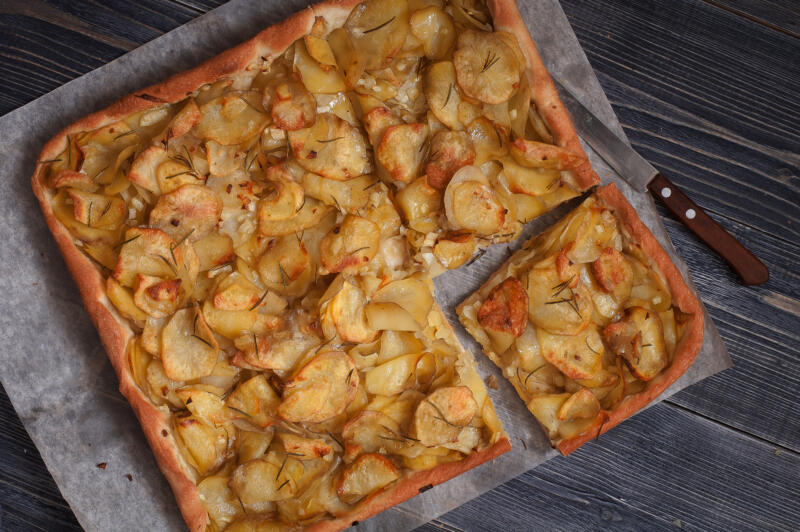
Initially skeptical, I discovered a world of flavors and textures that were both refreshing and satisfying.
This exploration wasn’t just about finding alternatives; it was about appreciating the simplicity and complexity of ingredients that could shine without cheese.
Let me share some insights from my cheeseless pizza adventure.
Highlights
- Embracing Variety: I learned that cheeseless pizza isn’t just about omitting cheese; it’s an invitation to experiment with a plethora of sauces, toppings, and herbs that bring vibrant flavors and textures to the forefront.
- Healthier Choices: Opting for a cheeseless pizza opened up a healthier alternative, reducing the dish’s overall calorie and fat content without compromising on taste. It became a delightful way to enjoy pizza more frequently, with a bit less guilt.
- Cultural Traditions and Innovations: Discovering the traditional Italian Pizza Bianca and Marinara showed me that cheeseless pizzas have roots in authentic culinary practices. It was enlightening to see how these traditions could blend with modern, creative twists to cater to diverse dietary preferences, including veganism.
In this article:
What is a Cheeseless Pizza?
A cheeseless pizza, as the name suggests, is a pizza without cheese.
It’s a popular choice among vegans and those who are lactose intolerant, as it eliminates the use of animal products, particularly dairy.
But don’t be fooled into thinking that a pizza without cheese is any less delicious or satisfying.
With the right alternative ingredients, you can mimic the taste and texture of cheese, creating a pizza that’s just as mouthwatering as its traditional counterpart.
Popular variations of cheeseless pizza
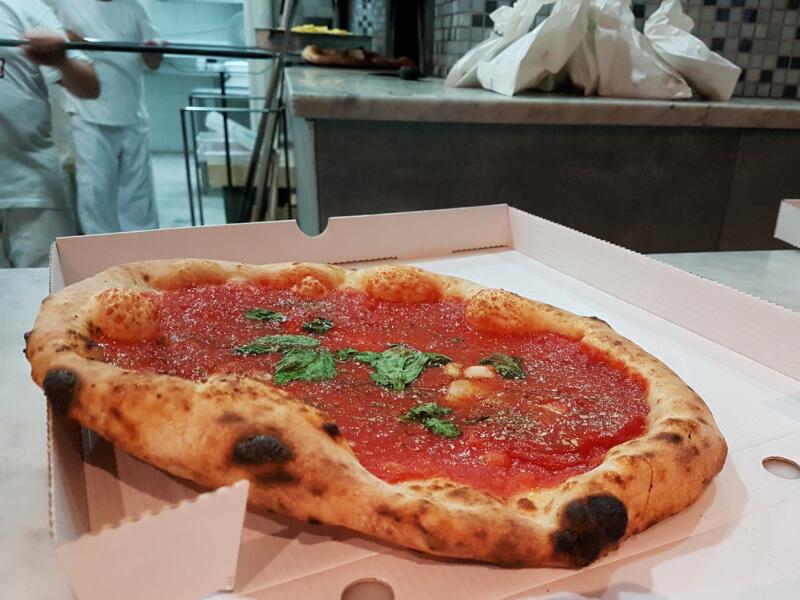
In Italy, there are several traditional pizzas that don’t necessarily have cheese as a primary ingredient. Here are a few:
Marinara: Originating from Naples, this simple yet flavorful pizza is topped with tomatoes, garlic, oregano, and olive oil. The absence of cheese allows the freshness and quality of these ingredients to shine through.
Pizza Bianca: A simple pizza brushed with olive oil, sprinkled with salt, and sometimes accented with rosemary. It’s commonly savored as a light bite or starter.
Pizza con Patate: Topped with thinly sliced potatoes, rosemary, and olive oil. Some variations might include onions or pancetta.
Pizza all’Aglio e Olio con Peperoncino: A spicy and flavorful option with garlic, olive oil, and chili flakes.
Pizza alla Romana: Traditionally topped with anchovies and olive oil, with the saltiness of the anchovies providing a robust flavor.
These examples emphasize the importance of fresh, high-quality ingredients in creating a delicious pizza, regardless of whether cheese is included.
Benefits of Eating Cheeseless Pizza
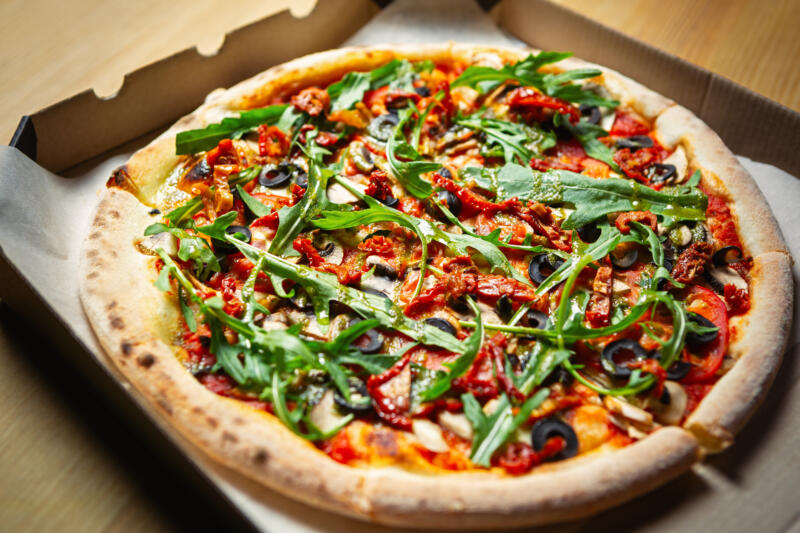
There are numerous benefits of eating cheeseless pizza.
For starters, it’s often healthier and lighter than traditional pizza.
Without the heavy layer of cheese, the fresh ingredients like heirloom tomatoes and basil can truly shine, adding a burst of flavor that’s both refreshing and satisfying.
Cheeseless pizza can also be a more affordable option. Cheese, especially high-quality varieties, can be one of the most expensive pizza toppings.
By skipping the cheese, especially the gourmet varieties, you can cut costs on your pizza while still enjoying a tasty treat.
For those following a vegan diet, cheeseless pizza is a fantastic option.
It allows you to enjoy the comfort and joy of pizza, all while adhering to your dietary preferences and values.
Common Mistakes to Avoid When Making Cheeseless Pizza
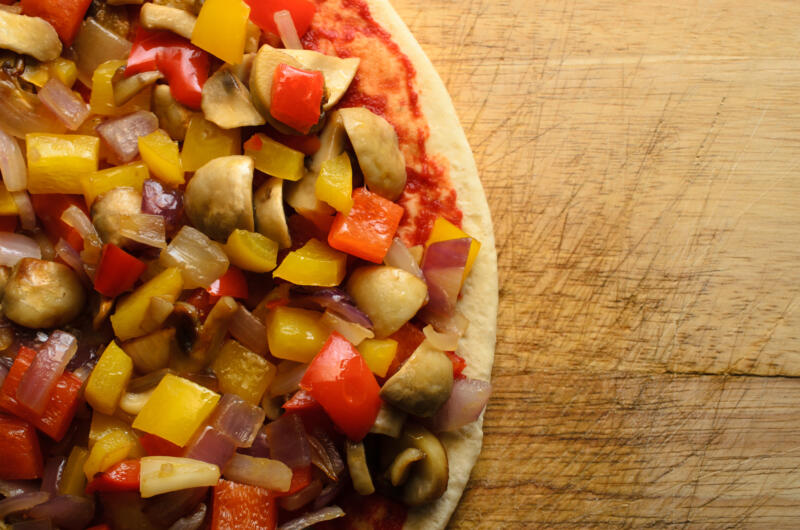
When making a cheeseless pizza, there are a few common mistakes to avoid:
- Using too many toppings: Without cheese to bind them, toppings can easily fall off a cheeseless pizza. Stick to a few key ingredients to ensure each bite is balanced and delicious.
- Not preheating the oven properly: A hot oven is crucial for achieving a crispy, golden crust. Ensure your oven reaches the desired temperature before popping in your pizza.
- Not allowing the pizza to cool before cutting: It may be tempting to dig in right away, but allowing your pizza to cool for a few minutes will make it easier to cut and can enhance the flavors.
- Overcompensating with sauce: Without cheese, you might be tempted to add extra sauce. However, too much sauce can make the crust soggy. Stick to a light, even layer of sauce for the best results.
- Skipping the seasoning: Cheese adds a lot of flavor to pizza, so when it’s missing, you need to compensate with other seasonings. Don’t forget to season your pizza with herbs, spices, or even a drizzle of good quality olive oil.
- Not using fresh ingredients: Without cheese to mask flavors, the freshness of your toppings becomes paramount. Using ripe vegetables and top-notch sauces can truly transform the taste of your pizza.
- Sticking solely to traditional toppings: There’s a world of non-dairy cheese alternatives out there waiting to be explored. For instance, nutritional yeast offers a cheesy kick and can be a delightful addition to your pizza.
- Ignoring the crust: A good crust is crucial to any pizza, cheeseless or not. Make sure your dough is well-kneaded and given enough time to rise. A well-made crust can carry the flavors of your toppings and make your cheeseless pizza a hit.
By avoiding these pitfalls, you can create a cheeseless pizza that’s just as delicious, if not more so, than traditional pizza.
Preparing the Dough
The foundation of any great pizza, cheeseless or not, is the dough.
Whether you’re making it from scratch or using a store-bought alternative, the dough sets the stage for your toppings and ultimately determines the texture and taste of your pizza.
How to Make Pizza Dough from Scratch
Crafting pizza dough in your kitchen is simpler than it seems. Just gather some basic ingredients: flour, yeast, water, salt, and a touch of sugar.
The steps are straightforward: combine the ingredients, work the dough until it’s supple and stretchy, and then let it rest until it expands to twice its original volume.
The best part? Pizza dough is naturally vegan, so no modifications are needed!
What Are Some Alternatives to Making Your Own Dough?
If making dough from scratch isn’t your thing, there are plenty of alternative options.
Store-bought pizza crusts are a convenient choice, with brands like Boboli and Mama Mary’s offering ready-to-use crusts.
But remember, these might have added preservatives and may not offer the freshness of dough made at home.
For individuals with specific dietary needs, opting for gluten-free pizza dough is a commendable choice.
Brands like Udi’s offer gluten-free crusts, and there are countless recipes online for homemade gluten-free dough.
While these alternatives may have a different texture than traditional dough, they can still make a delicious base for your cheeseless pizza.
Tips for Rolling Out the Dough and Getting It Ready for Toppings
After prepping your dough, get ready to shape it and lay on the toppings.
Here are some pointers to ensure you get a uniformly thin crust:
- Prevent sticking: Use a generous amount of flour on your work surface and a rolling pin to prevent the dough from sticking. Alternatively, you can roll out your dough on a piece of parchment paper.
- Gently stretch the dough: Instead of relying solely on the rolling pin, use your hands to gently stretch the dough. This can help you achieve a thinner crust without overworking the dough.
- Even thickness: Try to get the dough to an even thickness. This will ensure it cooks evenly and gives a nice base for your toppings.
- Pre-bake the crust: For that extra crunch, think about baking the dough briefly before layering on your toppings.
Picking the Perfect Sauces and Toppings
The beauty of pizza lies in its versatility, and this is especially true when it comes to cheeseless pizza.
Base Sauces: Tomato Sauce, White Sauce, Pesto
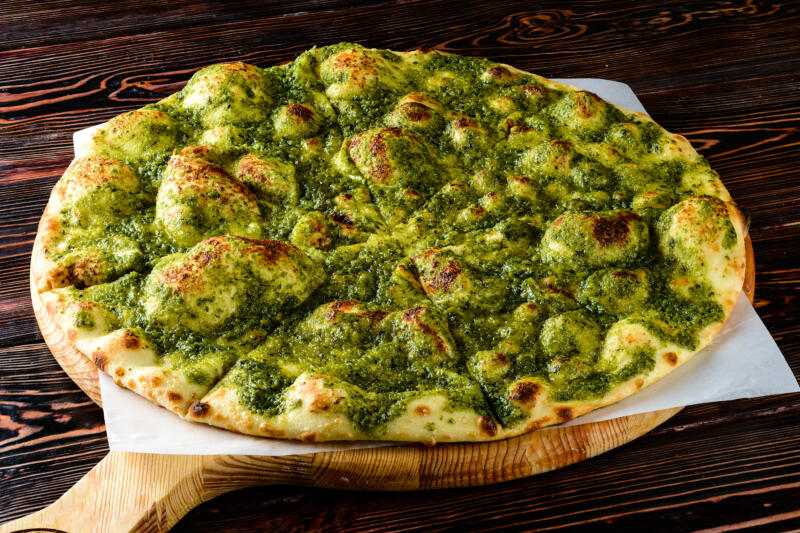
The base sauce sets the tone for your pizza. Traditional tomato sauce, made from simmered tomatoes, garlic, and herbs, offers a tangy and sweet flavor.
If you’re looking for something different, a white sauce, often made from garlic, olive oil, and flour, can add a creamy and savory note to your pizza.
Pesto sauce pairs beautifully with toppings like sun-dried tomatoes, grilled chicken, smoked salmon, prosciutto, fresh figs, tofu, and a drizzle of balsamic glaze, creating a harmonious blend of flavors and textures.
Each sauce offers a distinct taste palette; select one that pairs well with your desired toppings.
Adding Flavor with Herbs and Spices: Oregano, Basil, Pepper Flakes, etc.
Herbs and spices are key to enhancing the flavor of your pizza. Oregano, with its earthy and slightly bitter taste, is a pizza staple.
Fresh basil leaves infuse a sweet yet spicy note, harmonizing perfectly with tomato-centric sauces. For a spicy kick, scatter some red pepper flakes.
Venture out and play with various herbs and seasonings to craft your distinct taste blend.
Vegetarian Toppings: Olives, Mushrooms, Onions, Peppers, Tomatoes, etc.
For vegetarian toppings, the choices are vast.
The salty and tangy punch of olives can beautifully offset the sauce’s sweetness.
Mushrooms offer a meaty texture and umami flavor, while onions, peppers, and tomatoes add a fresh and vibrant touch.
Potatoes, especially on cheeseless pizzas, provide a crusty crunch and are a delicious favorite for many. Their starchy and earthy flavor serves as a tasty alternative to cheese, enhancing the overall pizza experience.
Onions and peppers introduce a crispness, tomatoes offer juiciness, artichokes add a slightly tangy note, and spinach contributes a leafy freshness.
Each topping contributes its own unique flavor and texture, making every bite of your pizza a delightful experience.
Non-Vegetarian Toppings: Meat Substitutes
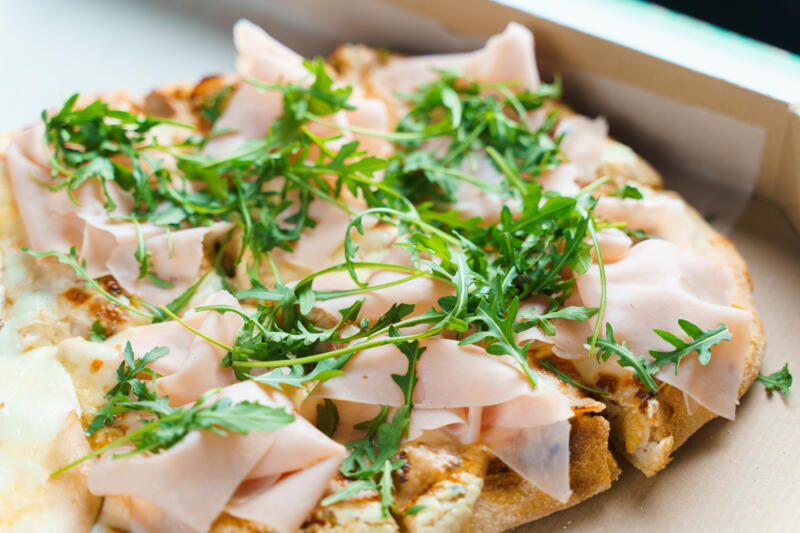
For those who crave the savory flavor of meat on their pizza, there are plenty of vegan-friendly substitutes.
Vegan sausage or bacon bits can add a smoky and hearty flavor to your pizza, all while keeping it completely plant-based.
These meat substitutes are often made from ingredients like soy, seitan, or even mushrooms, and are a great way to add protein to your pizza.
Vegan Cheeses and Nutritional Yeast for Extra Cheesy Flavor
Just because you’re skipping the dairy doesn’t mean you have to miss out on the cheesy flavor.
Plant-based cheeses, crafted from ingredients such as nuts, soy, and root vegetables, can emulate the consistency and flavor of conventional cheese.
Nutritional yeast, a deactivated yeast, is another popular choice among vegans for its cheesy and nutty flavor.
Both of these options are readily accessible in shops and can enhance your cheese-free pizza experience.
Prepping the Oven and Baking Surface
The secret to a perfect pizza lies not only in the dough and toppings but also in how it’s baked.
The oven temperature, baking surface, and baking time all play crucial roles in achieving that perfect balance of a crispy crust and well-cooked toppings.
Let’s delve into the details of each aspect.
Preheating the Oven Properly
It’s essential to preheat the oven before baking your pizza.
It’s recommended to preheat your oven to its highest setting, typically between 450 and 500°F (230-260°C), for at least 30 minutes before baking your pizza.
This ensures that the oven is hot enough to cook your pizza quickly, giving it a crispy crust and perfectly cooked toppings.
Remember, a pizza cooks from the bottom up, so a hot oven is key to achieving desired results.
Selecting the Ideal Baking Surface: From Pizza Stones to Baking Sheets
Your choice of baking surface plays a pivotal role in determining the final texture of your pizza crust.
A pizza stone is a popular choice for many, as it effectively pulls moisture from the dough, resulting in a crust that’s crispy and reminiscent of pizzeria-style pizzas.
For those chasing an even crisper, artisanal crust, a baking steel is a top contender. Its superior heat conduction and retention properties make it ideal for crafting that perfect crust.
While pizza stones and baking steels offer distinct advantages, they do need preheating and can be somewhat challenging to maneuver.
On the other hand, a baking sheet is more convenient and easier to use, but it might not give you the same level of crispiness.
Ultimately, the best surface is one that aligns with your baking goals and the equipment you have available.
Cooking Your Pizza
After preheating your oven and prepping your pizza, you’re set to start the baking process.
Slide your pizza into the oven and let it cook at the suggested temperature until you see a golden-brown crust and your toppings appear perfectly cooked.
Typically, this takes around 10-15 minutes, but it’s essential to monitor it, as ovens can differ.
Once baked to perfection, take your pizza out of the oven, allowing it a brief cooling period.
This brief pause not only lets the flavors intensify but also ensures a cleaner slice when serving.
Serving the Pizza
After letting your pizza settle for a bit, it’s time to portion and present. Using a pizza slicer or a broad knife, cut the pizza into consistent slices.
As for what to serve with your cheeseless pizza, the options are endless.
A fresh salad, a side of garlic bread, or some marinated olives can complement the flavors of the pizza.
And don’t forget the drinks! A chilled beer, a glass of wine, or a refreshing lemonade can pair wonderfully with your homemade pizza.
Closing Thoughts
Making a cheeseless pizza at home is a fun and rewarding experience.
It allows you to experiment with different sauces, toppings, and baking techniques to create a pizza that’s perfectly tailored to your tastes.
Whether you’re embracing veganism, managing lactose intolerance, or just exploring lighter pizza variations, a cheeseless pizza offers a delightful and fulfilling alternative.
Why not venture into this culinary experience? You could uncover a fresh, favorite spin on this timeless meal.
And the beauty of homemade pizza? It’s all about personal creativity without boundaries.
Feel free to get creative and make the pizza that you love!